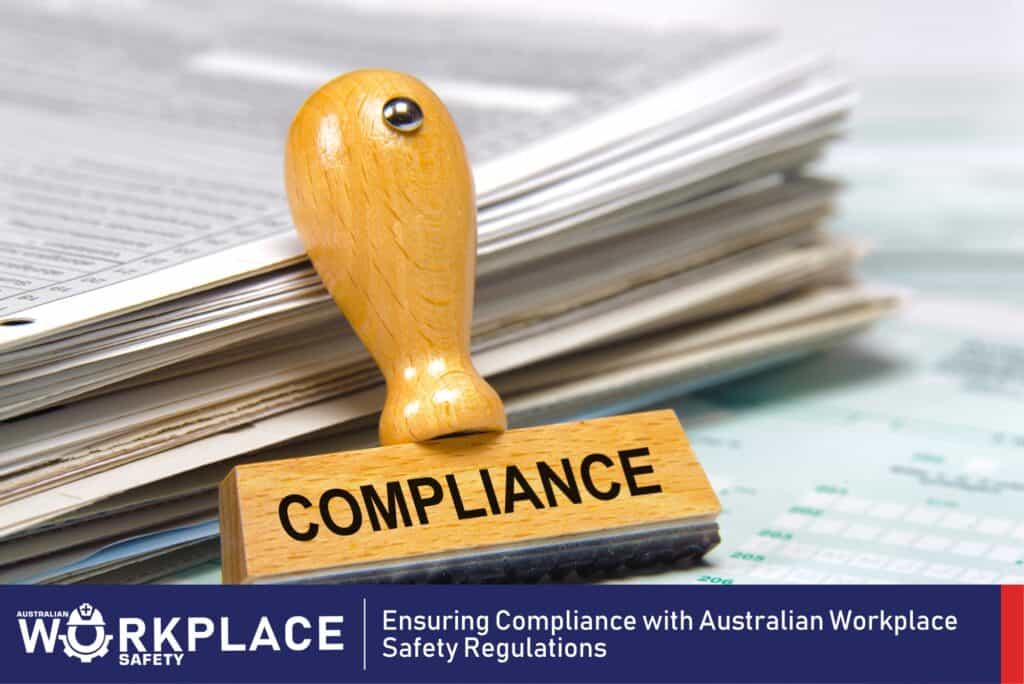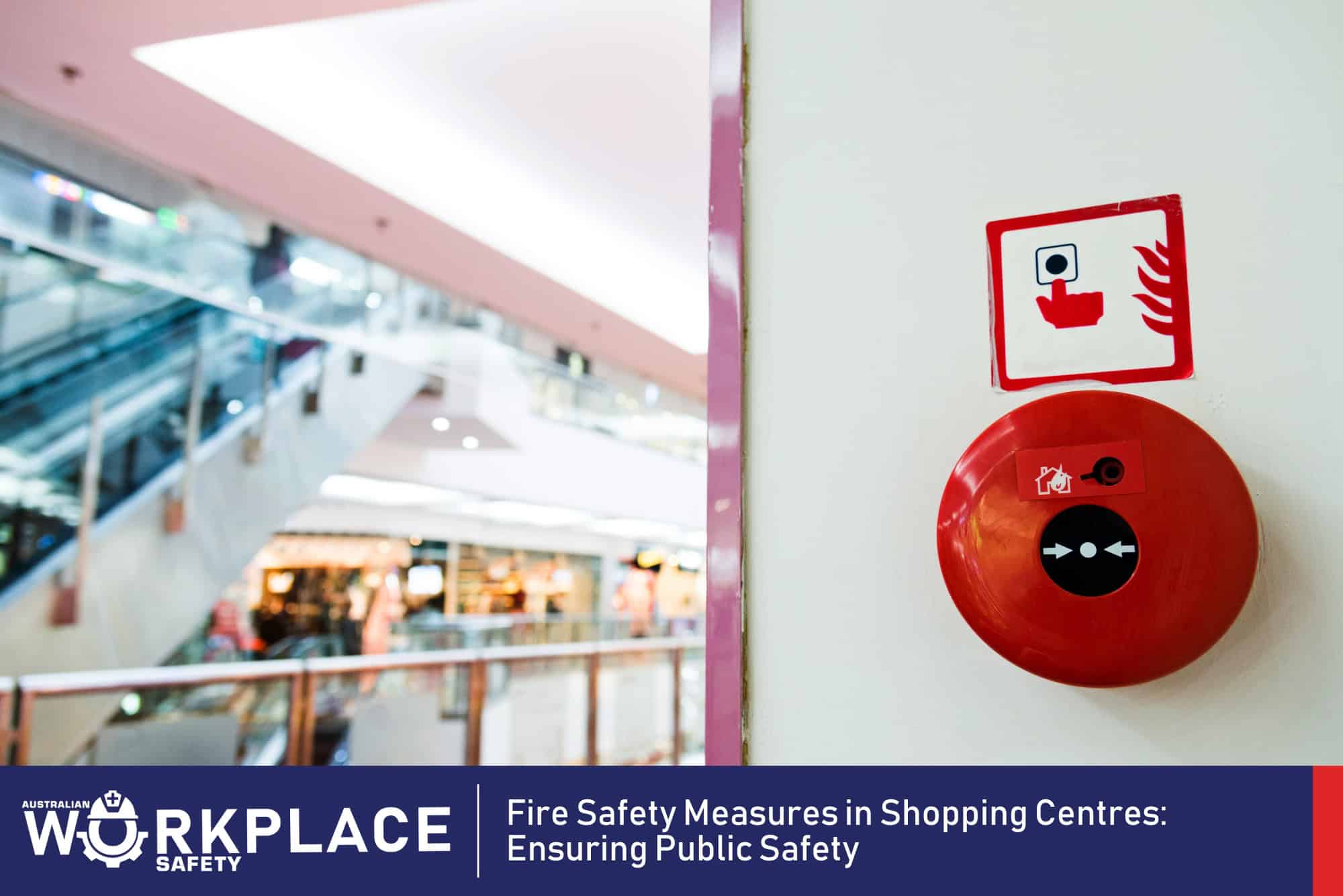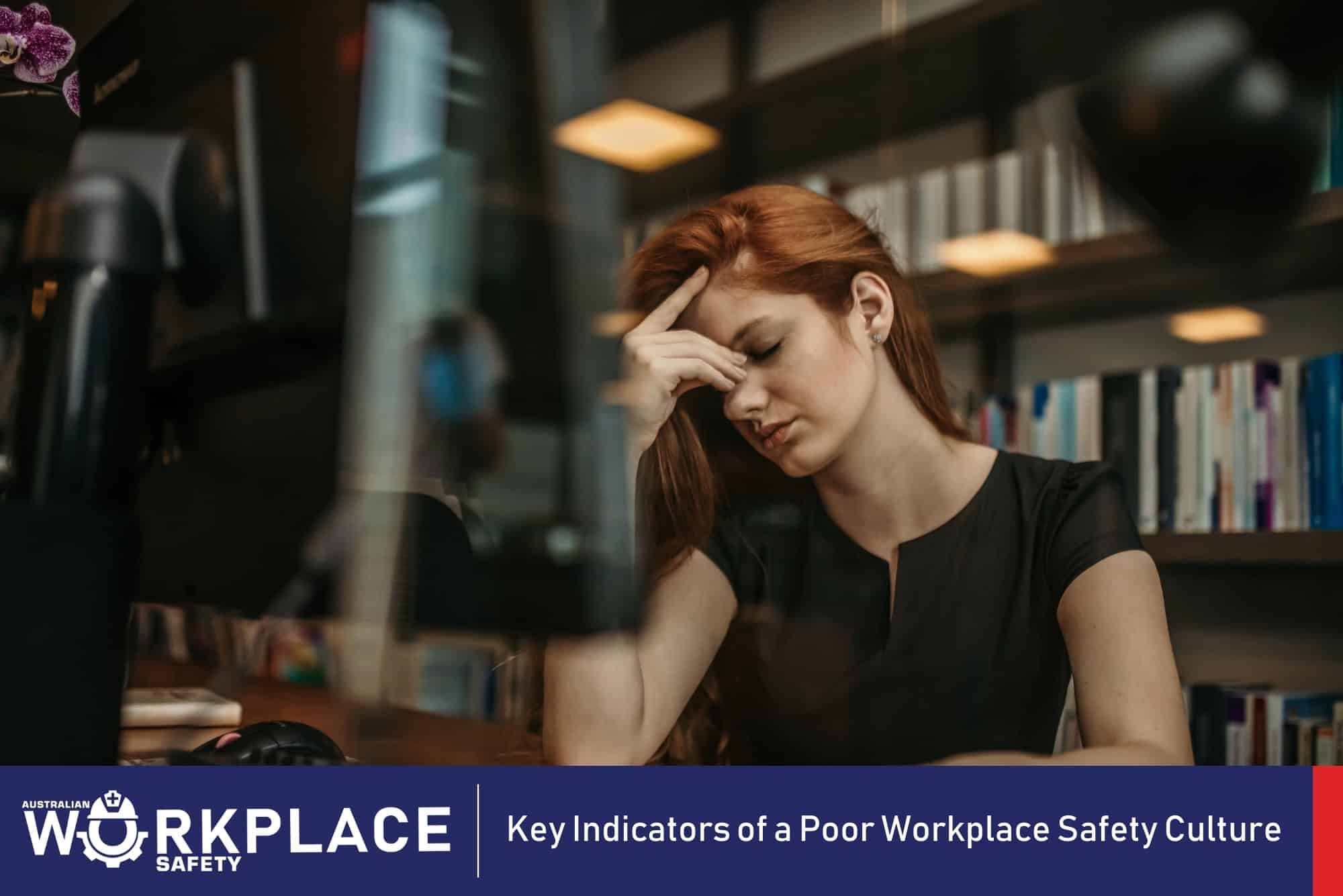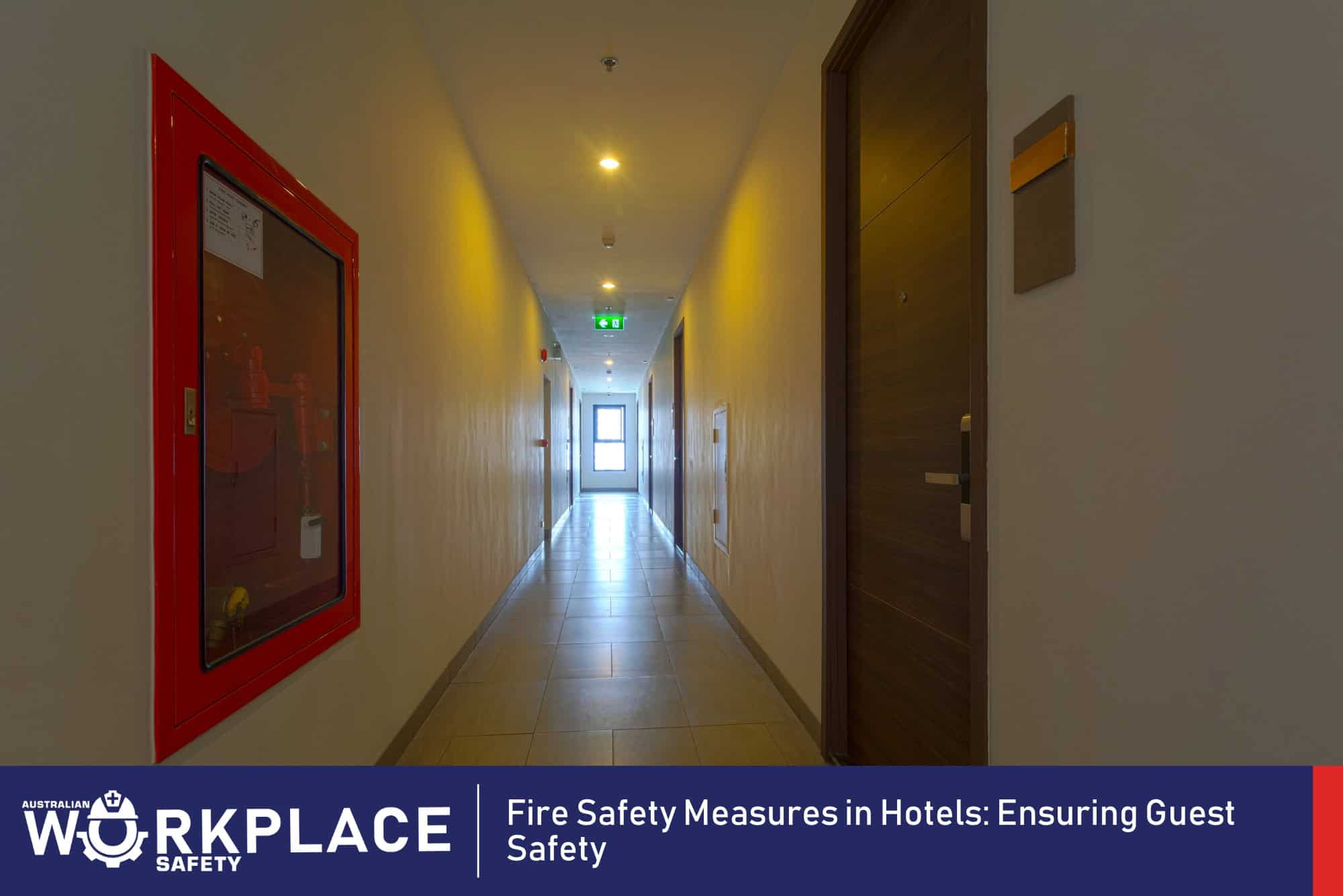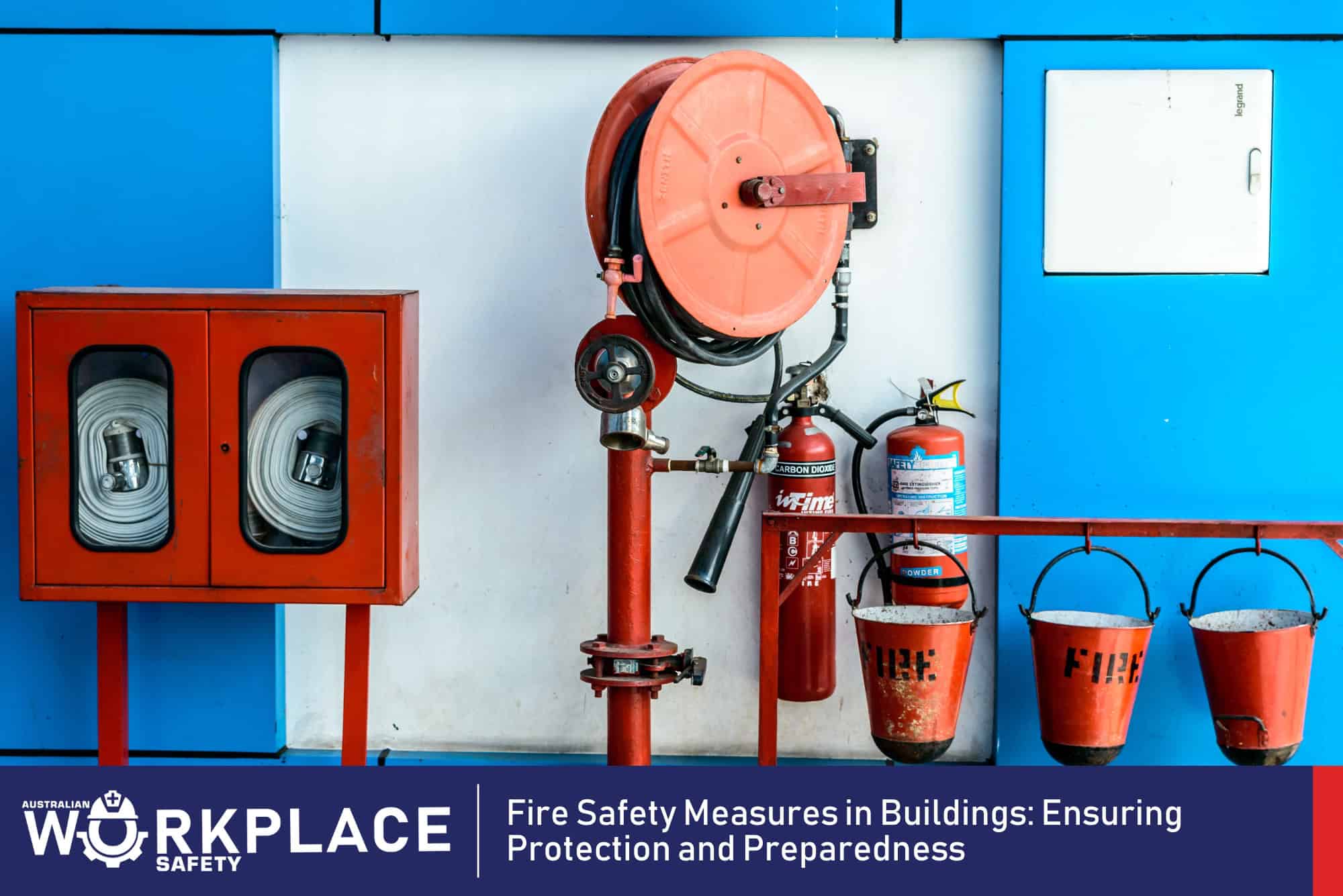Workplace safety is a paramount concern in all of Australia. Strict regulations are in place to protect the health and well-being of employees. As businesses strive to create a safe working environment, it is essential to understand and adhere to Australian workplace safety regulations.
Whether you are a business owner or manager, you have the duty to ensure compliance with these regulations. Here are some key points and principles to remember when offering valuable insights for employers and employees alike.
Understanding the Legal Framework
The foundation of workplace safety in Australia lies in a comprehensive legal framework that includes federal and state regulations. The primary legislation is the Work Health and Safety Act 2011, which sets out the core principles and responsibilities for workplace safety. This act mandates that both employers and employees have a duty of care to ensure the health, safety, and welfare of all individuals in the workplace.
Additionally, the Act outlines the requirement to eliminate or minimise risks, provide necessary training and supervision, and maintain a safe work environment. Most importantly, it is crucial to recognise that workplace safety is a shared responsibility between employers, employees, and other parties involved in the work environment.
Risk Assessment and Management
One of the cornerstones of compliance with Australian workplace safety regulations is the thorough assessment and management of risks. Employers must conduct regular risk assessments to identify potential hazards and take appropriate measures to mitigate them. This involves a systematic examination of the workplace layout, equipment, procedures, and even psychological factors that could impact employee well-being.
Risk assessments should involve collaboration between employers and employees to ensure a comprehensive understanding of potential hazards. Once hazards are identified, employers must implement control measures to minimise risks. These measures can range from engineering solutions, such as modifying equipment or work processes, to administrative controls like implementing safe work procedures and providing appropriate personal protective equipment (PPE). By proactively identifying risks and implementing effective control measures, businesses can prevent accidents, injuries, and illnesses.
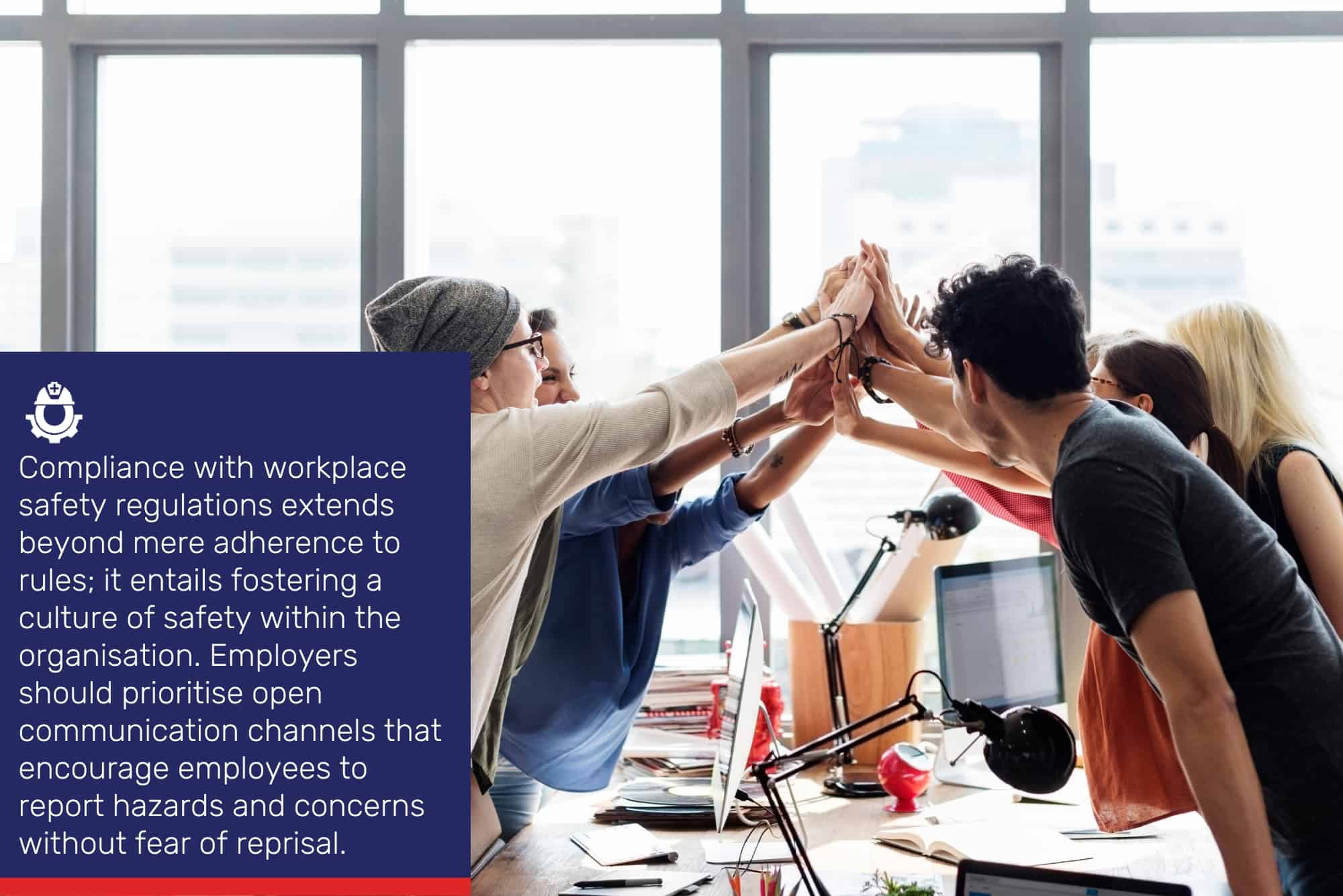
Creating a Culture of Safety
Compliance with workplace safety regulations extends beyond mere adherence to rules; it entails fostering a culture of safety within the organisation. Employers should prioritise open communication channels that encourage employees to report hazards and concerns without fear of reprisal. This open dialogue not only identifies potential risks but also empowers employees to be actively engaged in maintaining a safe work environment.
Regular safety training and workshops should be conducted to ensure that all staff members are well-informed about safety protocols and procedures. Training should not be a one-time thing, but it must be an ongoing process that evolves as new risks emerge or regulations change. In a culture of safety, employees take personal responsibility for their well-being and the well-being of their colleagues. This sense of ownership leads to a proactive approach to hazard identification and risk mitigation.
Maintaining Proper Documentation
Accurate and up-to-date documentation is a critical component of compliance with Australian workplace safety regulations. Employers must keep records of risk assessments, incident reports, safety training sessions, and any other relevant documentation. This documentation serves several important purposes.
For one, it demonstrates the business’s commitment to safety and due diligence in complying with regulations. In the event of audits or investigations, well-documented records provide evidence that appropriate measures were taken to ensure a safe working environment. Moreover, documentation also helps track the effectiveness of control measures over time. By reviewing records, businesses can identify trends, assess the impact of implemented controls, and make informed decisions for continuous improvement.
Providing Adequate Training
A key aspect of ensuring compliance is the provision of adequate training to employees. Training programs should cover a range of topics, including emergency procedures, proper equipment usage, handling hazardous substances, and ergonomics. Training should be tailored to the specific roles and responsibilities of employees, ensuring that they have the knowledge and skills needed to perform their tasks safely.
Effective training goes beyond the dissemination of information; it engages employees and equips them with the critical thinking skills to identify and respond to potential hazards. Interactive training methods, such as hands-on demonstrations, simulations, and scenario-based exercises, enhance engagement and retention of essential safety knowledge.
Managing Incidents and Reporting
Despite the best preventative efforts, incidents may still occur. In such cases, it is crucial to have a well-defined incident management and reporting process in place. Employers must promptly investigate incidents, determine their root causes, and take corrective actions to prevent similar occurrences in the future.
An incident investigation should be thorough and impartial, focusing on identifying the underlying causes rather than assigning blame. This approach fosters a culture of continuous improvement and learning from mistakes. Corrective actions should address not only the immediate cause of the incident but also the underlying systemic factors that contributed to the event.
Additionally, certain types of incidents, such as serious injuries or fatalities, must be reported to the relevant authorities as per legal requirements. Timely and accurate reporting ensures that appropriate regulatory bodies can assess the situation and determine if further action or investigation is necessary.
Staying Updated with Regulations
Workplace safety regulations in Australia are subject to updates and amendments. To maintain compliance, businesses must stay informed about any changes in regulations that may impact their operations. Subscribing to official government newsletters, attending industry seminars, and engaging with professional networks are effective ways to stay up-to-date with the latest developments in workplace safety regulations.
Staying updated with regulations is not only a legal requirement but also a proactive measure to anticipate and address emerging safety issues. As industries evolve and new technologies are introduced, regulations may adapt to address unique risks. By staying informed, businesses can proactively adjust their safety management systems to align with the evolving regulatory landscape.
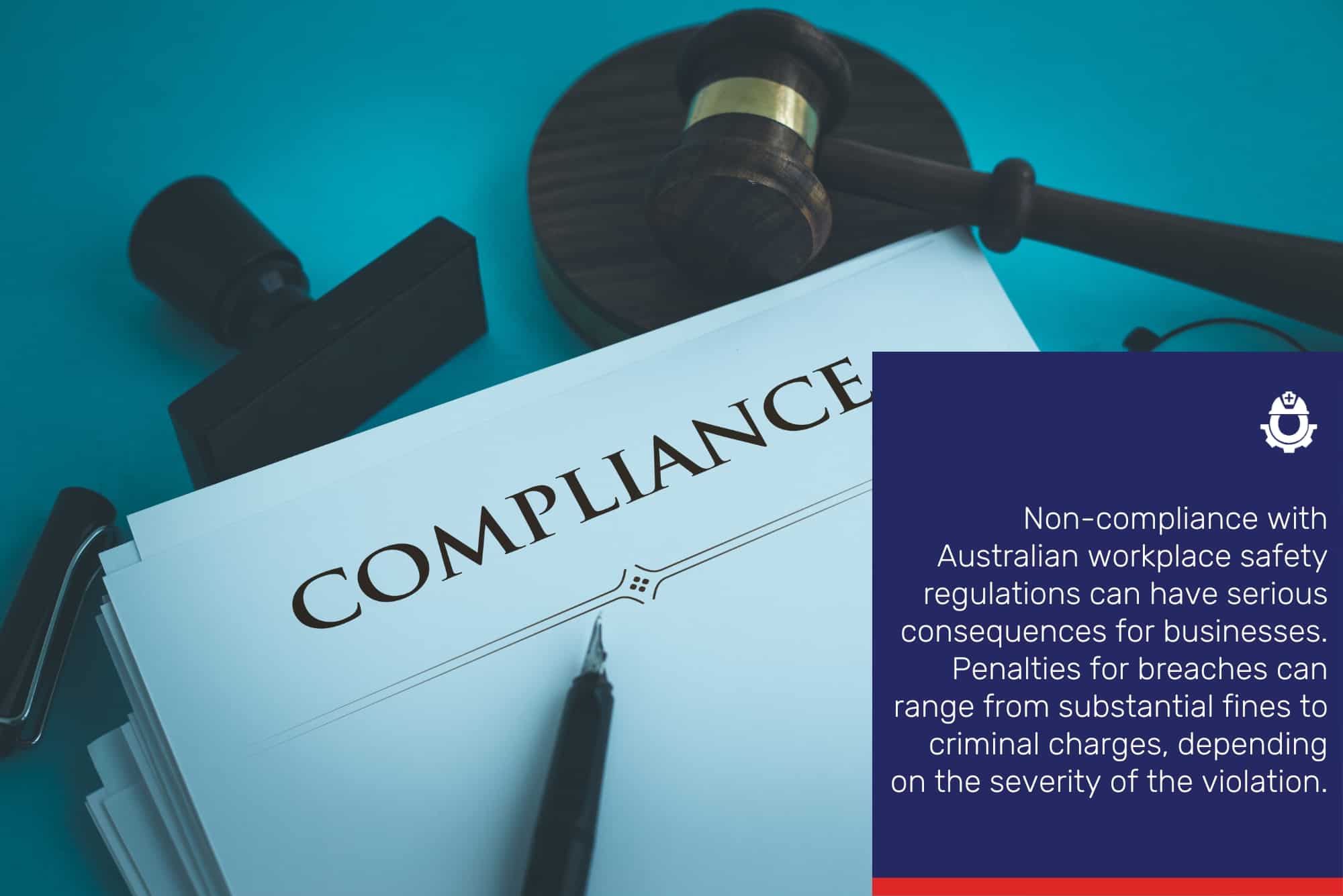
Consequences of Non-Compliance
Non-compliance with Australian workplace safety regulations can have serious consequences for businesses. Penalties for breaches can range from substantial fines to criminal charges, depending on the severity of the violation. Moreover, incidents resulting from non-compliance can lead to reputational damage, increased insurance costs, and decreased employee morale.
The financial impact of non-compliance can be substantial. Fines can vary based on the nature of the breach, the level of risk posed, and the business’s history of compliance. In cases of significant negligence or recklessness, individuals within the organisation, including directors and managers, can also be held personally liable. Criminal charges resulting from severe breaches can lead to imprisonment of officers. This just highlights the gravity of adhering to workplace safety regulations.
Keep your workplace safe and compliant.
Ensuring compliance with Australian workplace safety regulations is a fundamental responsibility for businesses operating in the country. Investing their time, money and resources on safety compliance can help the organisation create a safer and healthier working environment for their employees.
Apart from upholding legal requirements, compliance also demonstrates a genuine commitment to the well-being of the workforce. As businesses prioritise safety, they contribute not only to the success of their own operations but also to the broader goal of reducing workplace injuries and illnesses across Australia.
